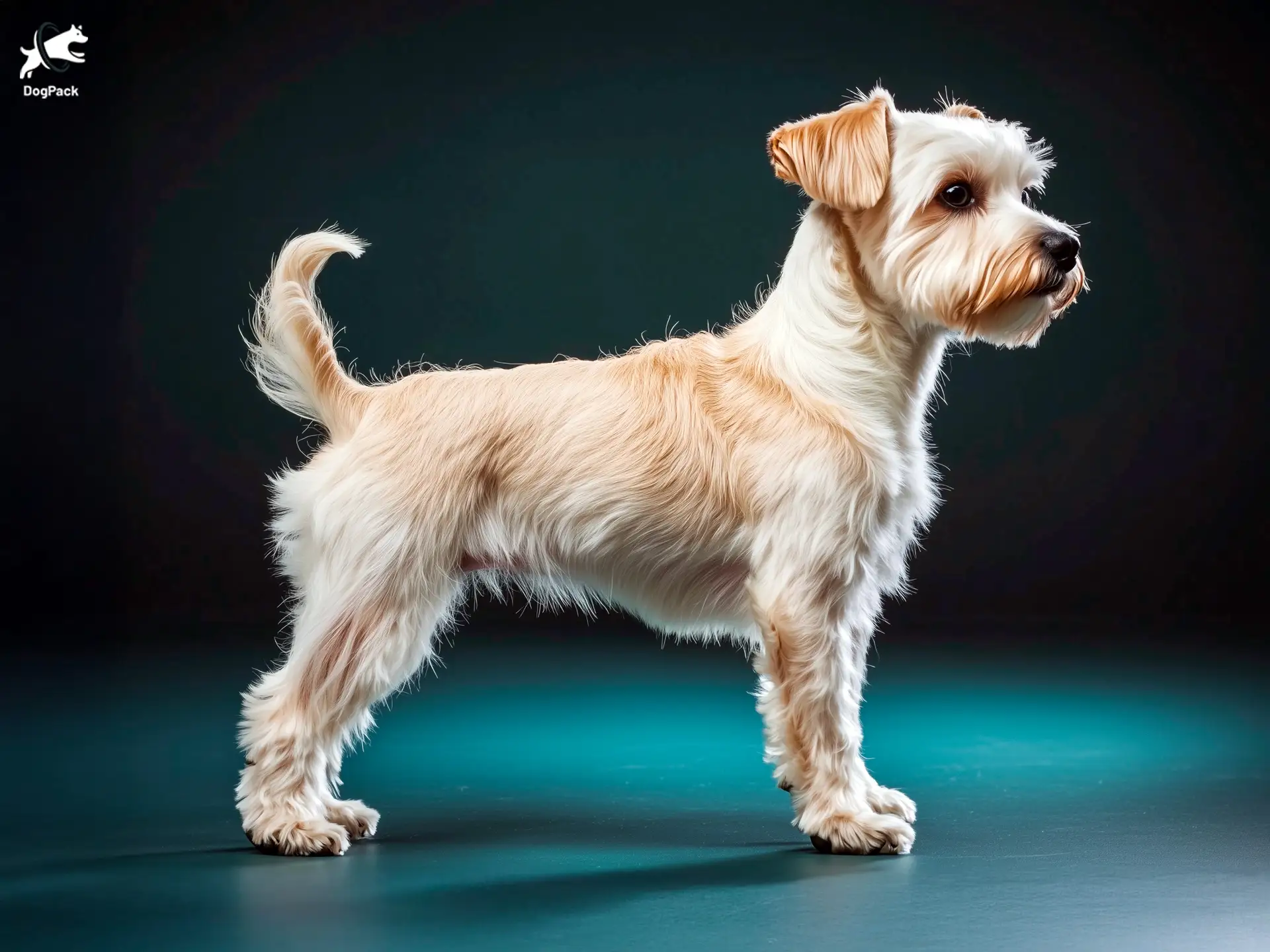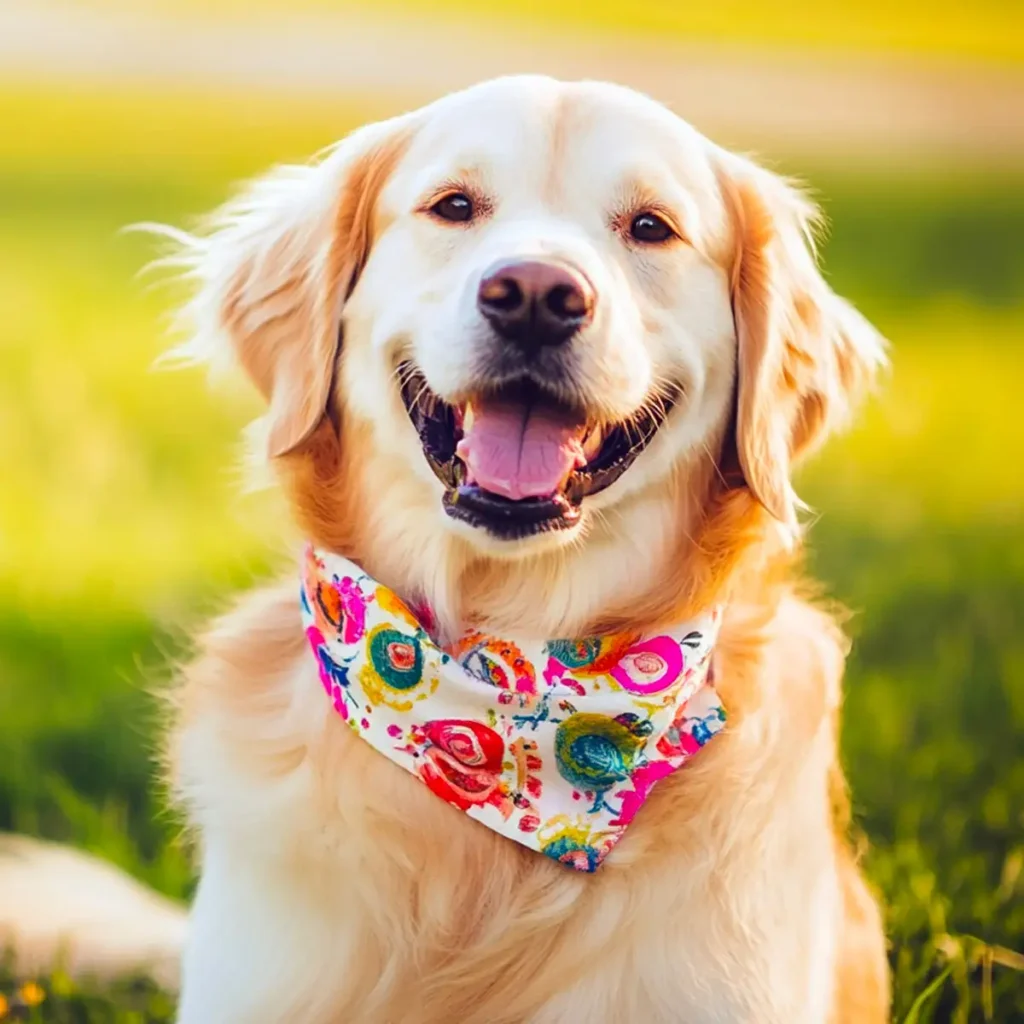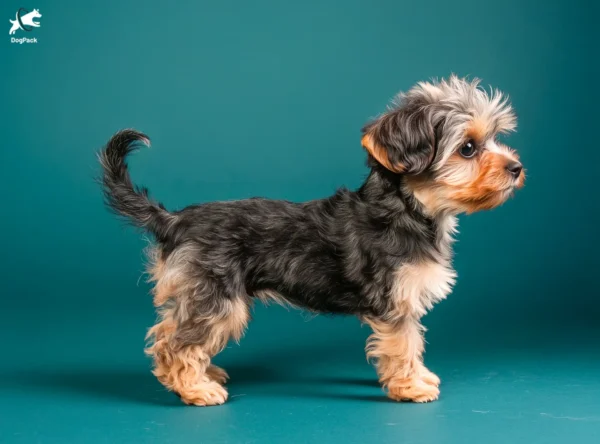Westiepoo Dog Breed Info & Overview
The Westiepoo, a delightful mix of the West Highland White Terrier and Poodle, is a playful and intelligent companion with a curly, low-shedding coat. Equally happy curling up on a lap or dashing around the yard, this small yet spirited breed charms everyone it meets. With its affectionate nature and adaptability, the Westiepoo makes a wonderful addition to any loving home.
Characteristics
Pictures
Breed History
Although the Westiepoo is considered a “designer” mix, its lineage goes back to two well-established purebred lines: the West Highland White Terrier and the Poodle. This cross likely began in the United States in the late 20th century, when breeders aimed to combine the terrier’s spunk with the poodle’s intelligence and low-shedding coat. The result was a small, spirited dog with an eager-to-please personality.
Over time, these dogs became increasingly popular with families searching for an upbeat yet manageable companion. The West Highland White Terrier brought its confident charm, while the Poodle contributed a distinctive curly coat and remarkable trainability. The resulting Westiepoo flourished as an adaptable pet, easily fitting into both bustling homes and cozy apartments—a testament to its versatile roots and easygoing nature.
While not formally recognized by major kennel clubs, this delightful hybrid has established its own niche in the canine world. Enthusiasts praise the Westiepoo for retaining the best of both parental breeds. Its rise in popularity can be credited to word-of-mouth endorsements, social media, and a growing demand for family-friendly mixes. Despite its relatively brief history, the breed has certainly left its mark.
Temperament, Personality
Ever known a dog that’s both fun-sized and fun-loving? These pups fit the description perfectly. Often alert and curious, they love shadowing their favorite humans around the house. You’ll find them eager to greet guests, especially if treats or belly rubs are on offer. At the same time, they carry just enough of that terrier tenacity to keep life interesting.
When it comes to children, a well-socialized Westiepoo typically proves a friendly playmate. Many owners report that their dogs thrive on gentle games and cuddles, often forming deep bonds with even the youngest family members. This breed is sociable around other pets, too, though early introductions are always recommended. Proper socialization ensures they keep that easygoing attitude well into adulthood.
One of the standout traits is an eagerness to participate in all household activities. Whether you’re watching a movie or doing chores, these dogs love to be in the mix. They’re attentive to their surroundings but rarely overly anxious. This balanced demeanor makes them excellent companions, especially for owners seeking a dog that’s affectionate without being overly clingy.
Physical Characteristics
These dogs typically sport a compact build, somewhere between the robust West Highland White Terrier and the lithe Poodle. Their faces often retain the perky Westie expression—a slight hint of mischief in those dark, round eyes. Meanwhile, the muzzle can be a bit longer, reflecting the Poodle’s elegant profile. Their tails can vary in length but usually wag non-stop with excitement.
Coat textures can also differ: some Westiepoos inherit a woolly, tightly curled coat, while others have a looser wave. Colors range widely—white, cream, black, or even parti-colored coats are all possible. This variety gives them a uniquely charming appearance that’s hard not to adore. Ears are typically folded over or semi-erect, contributing to the breed’s alert, inquisitive look.
Standing around a foot tall, these small canines pack plenty of personality into their petite frames. The Poodle’s genes sometimes lend a graceful gait, making them surprisingly agile. In terms of overall physique, many Westiepoos strike a neat balance: sturdy enough for playful antics and jumping sessions, yet light enough to be scooped up for cuddle time.
Health Issues
While generally robust, these dogs can inherit health concerns from either parent breed. Common issues might include patellar luxation, a condition that causes knee dislocation. Regular vet checks will help detect early signs and keep those knees in good working order. Additionally, some may inherit dental problems, so frequent tooth-brushing is key to maintaining a healthy smile.
Skin sensitivities could also crop up, particularly in pups that lean more toward the West Highland White Terrier side. Watch for signs of itchiness, dryness, or redness, and consult your vet for the right shampoo and diet adjustments. Although typically considered a low-shedding breed, underlying allergies can still trigger discomfort. Maintaining a clean environment helps minimize exposure to potential allergens.
Eye conditions like cataracts may occur, especially as these dogs enter their senior years. To catch issues early, schedule regular exams and stay alert for symptoms such as cloudiness or changes in vision. Many Westiepoos enjoy a long, healthy life when provided proper preventive care, a balanced diet, and consistent exercise. As always, early intervention is the key to boosting longevity.
Grooming Needs
Expect to brush these curly-coated cuties several times a week. Whether their coat is tightly curled or wavy, regular brushing helps avoid mats and tangles. If you’ve ever had a sweater unravel in the wash, you know how tricky those knots can be. A detangling spray can simplify the process, and your Westiepoo will appreciate the extra attention.
Professional grooming appointments every six to eight weeks will keep coats looking their best. A trim around the eyes ensures clear vision, while a hygienic cut helps with cleanliness. Though they don’t shed much, loose hair can get caught in their curls. That’s why many owners find a regular grooming schedule—either at home or with a pro—a must.
Don’t forget ear care: those floppy, sometimes semi-erect ears can harbor moisture if not cleaned. A gentle wipe with a dog-safe solution once a week helps prevent infections. Nail trimming is equally important—overgrown nails can affect their gait and comfort. Lastly, remember to brush their teeth several times weekly. Keeping up with these routines ensures a happy, healthy pup.
Exercise Requirements
Though they’re often content in small spaces, these pups need daily activity to stay healthy. A brisk walk around the neighborhood or a lively fetch session in a hallway can do wonders. Their moderate energy level means they’re not hyperactive, but they will appreciate having a chance to stretch those legs. Plus, regular exercise can stave off weight issues.
If you have access to a secure yard, supervised playtime is a fantastic outlet for any terrier-like impulses. Toss a toy, watch them chase it down, and be ready for them to come back requesting another round. Swimming isn’t always their favorite, but some Westiepoos do enjoy water play. Gauge your dog’s comfort level and go slow if they seem unsure.
Brain workouts can be just as important. Puzzle toys or treat-dispensing gadgets keep them mentally engaged. Since they’re part Poodle, don’t be surprised if they figure out your puzzle toy faster than expected! Aim for 30–60 minutes of dedicated physical and mental stimulation each day. This balance keeps them calm, content, and less likely to fill the boredom gap by barking.
Training Tips
Consistency is key when working with this bright hybrid. Positive reinforcement—treats, praise, and a cheerful tone—usually yields the best results. If they sense your frustration, they might respond with stubbornness. However, harness their willingness to please, and training can become a bonding experience rather than a chore. Short, frequent sessions help hold their attention.
Socialization from puppyhood is vital. Introduce them to different environments, sounds, and faces to grow a well-adjusted companion. Their Westie side can exhibit some territorial instincts, but early exposure to various situations often curbs that. Encourage polite greetings with strangers and calm behavior around other pets by rewarding them the moment they act appropriately.
Obedience cues like “sit,” “stay,” and “come” will be picked up quickly, thanks to that Poodle smarts. Use puzzle games to keep them mentally occupied and add advanced commands if they’re eager. If you notice repetitive barking or digging, gently redirect them to a constructive activity. Overall, training a Westiepoo becomes a joyous undertaking once you lock in on positive methods.
Nutrition, Diet
Because of their energetic but not overly hyper nature, these dogs do best with a balanced diet formulated for small breeds. Aim for a kibble that’s around 25–30% protein, helping maintain muscle without packing on extra pounds. Look for formulas that include omega fatty acids to support skin health, which is particularly beneficial if your dog leans toward the Westie’s sensitive coat.
Westiepoos generally need about ¾ to 1 cup of high-quality dog food split into two meals daily, depending on activity level and overall size. A smaller or more sedentary pup might thrive on the lower end, while a very active dog might need slightly more. Monitor portion sizes carefully to prevent excess weight gain, which can stress their joints.
Consider adding small amounts of fresh or steamed vegetables like carrots or green beans for extra vitamins and minerals. Some owners also rotate in fish-based meals on occasion for a good dose of omega-3s. Always introduce new foods gradually to avoid digestive upset, and consult your vet if you have concerns about specific nutrient requirements for your unique Westiepoo.
Adoption, Breeders
Finding a reputable source for a Westiepoo involves doing homework. Start by looking for breeders who perform health screenings on their parent dogs, specifically checking knees, eyes, and skin conditions. Ask about each puppy’s lineage and upbringing, including socialization practices. Ethical breeders typically encourage visits or video calls so you can observe the environment and meet the puppy’s mother.
If adoption is your path, it’s possible to find this mix at local shelters or through dedicated rescue organizations. Sites like Petfinder allow you to search based on breed, location, and other criteria. Rescue groups often provide detailed information about a dog’s personality and health history, making it easier to find a compatible match.
You can also reach out to platforms focusing on Poodle mixes, as these sites may list available Westiepoos. Websites like Adopt a Pet offer updated listings from shelters nationwide. However you proceed, ensure you’re prepared for the responsibilities of dog ownership. A little patience in the adoption or buying process can reward you with a healthy, happy companion.
Family Pet?
Their playful nature and compact size make them wonderful family pets—especially in households with older children who understand gentler handling. Many Westiepoos effortlessly adapt to busier family schedules, greeting each member at the door with wagging tails. While they enjoy bursts of play, they’re also fond of curling up on the couch for some quality family-time.
Interactions with very young kids should always be supervised, not because they’re aggressive, but to ensure neither child nor dog becomes overwhelmed. Teaching kids how to properly pet and approach the dog fosters respect and harmony. Families who instill good manners in both their children and their Westiepoo often discover an unbreakable bond forming between them.
They typically coexist well with other pets, too. An easygoing cat or another calm dog might become a built-in buddy. If introduced early, Westiepoos learn to share spaces and toys without too much fuss. Overall, they thrive in a nurturing environment where they can participate in daily life. In return, you’ll get unwavering loyalty and plenty of comedic moments.
Right For You?
Before bringing one home, consider your lifestyle. If you’re often away or have little time for grooming and daily walks, this may not be the best fit. However, if you’re seeking a smaller dog that offers big personality—one that loves interactive play sessions and can cuddle on the sofa afterward—then a Westiepoo could be right up your alley.
Their low-shedding coat appeals to many prospective owners, but remember that low shedding doesn’t mean zero grooming. Budget both time and funds for regular coat care. If you value a companion who’s sociable, learns quickly, and stays happily by your side, you’ll likely adore this breed. Ultimately, matching your expectations with their needs leads to a harmonious, long-lasting companionship.
Apartment dwellers find them an excellent choice, provided there’s a daily exercise routine. Active seniors appreciate their manageable size and cheerful demeanor, too. Young families enjoy their playful side. Essentially, they fit a wide variety of households, as long as consistent engagement is provided. If you’re ready to invest in training, grooming, and daily fun, you might have found your ideal companion.
Conclusion
A Westiepoo is a terrific match for owners who crave a blend of the Westie’s fearless personality and the Poodle’s clever charm. They suit many lifestyles, from active retirees to families with children, thanks to their moderate energy and affectionate nature. If you prioritize companionship, low shedding, and a bright, trainable mind, this delightful dog may well become your new best friend.
FAQs
-
Does the Westiepoo inherit the hypoallergenic coat of the Poodle?
Many Westiepoos have a low-shedding, wavy or curly coat, thanks to their Poodle lineage, making them more allergy-friendly. However, coat type varies by individual, and some may shed slightly more if they inherit more traits from the West Highland White Terrier.
-
Are Westiepoos prone to separation anxiety?
Yes, Westiepoos form strong bonds with their owners and may develop separation anxiety if left alone for long periods. Providing mental stimulation, training, and interactive toys can help them cope better when their owners are away.
-
How does the Westiepoo’s temperament compare to its parent breeds?
The Westiepoo is a mix of the playful and stubborn Westie and the intelligent and social Poodle. This combination makes them lively, affectionate, and highly trainable, but they may inherit a streak of independence that requires patience during training.
-
Is the Westiepoo a good fit for apartment living?
Yes! Westiepoos adapt well to apartments due to their small size and moderate exercise needs. However, they can be alert barkers, so early training is important to curb excessive barking in shared living spaces.
-
How much grooming does a Westiepoo require?
A Westiepoo needs brushing several times a week to prevent matting and tangles, especially if they inherit a curly coat. Regular trims every 6–8 weeks help maintain their coat’s health and reduce shedding.
Breed Ratings
The Westiepoo picks up commands quickly, blending the Westie’s wit with the Poodle’s smarts.
Spirited and lively, they enjoy games and family interaction, especially when kids are involved.
Moderate bursts of energy balanced by calmer downtime, making them suitable for smaller living spaces.
Minimal shedding, though grooming is still necessary to keep their coat tangle-free.
Inherited from the Westie side, they may chase small critters but can be trained to curb this impulse.
Their curly or wavy coat requires regular brushing and occasional professional trims.
Positive reinforcement works wonders for this willing, intelligent hybrid.
While not clingy, they do prefer company and may become restless if left for long periods.
They’re naturally alert and may bark at new sights or sounds but can learn moderation.
Drooling is rarely an issue, especially compared to other breeds.
With proper socialization, they generally get along well with other dogs.
Overall healthy, but watch for known issues like patellar luxation and skin sensitivities.













